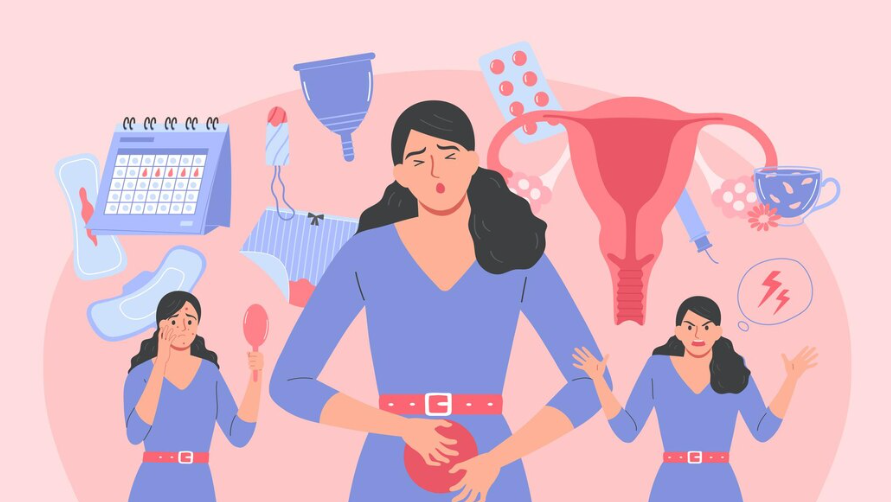Considered one of the most common gynecological problems for women, dysmenorrhea is the medical term for distressing menstrual cramps caused by uterine contractions.
The degree of pain varies from woman to woman, which could be severe enough to restrict daily activities. Their quality of life and general well-being are affected by this.
Primary Dysmenorrhea & Secondary Dysmenorrhea are the types of dysmenorrhea, based on the pathophysiology or cause.
So to put it simply, the primary type is the recurrent menstrual pain that occurs every month.
However, secondary dysmenorrhea is menstrual pain that is the result of reproductive system disorders. Learn about it further by reading the article till the very end.
What Causes Primary and Secondary Dysmenorrhea?

Primary dysmenorrhea occurs during menstrual bleeding and is associated with the overproduction of prostaglandins (a group of lipids) or vasopressin (a type of hormone).
When menstruation begins, the endometrial cells release prostaglandins that stimulate muscular contractions and restrict blood supply.
Every woman releases different prostaglandin levels, and the more prostaglandins released, the more severe dysmenorrhea gets.
That is why every woman experiences varying levels of pain during menstruation.
On the other hand, secondary type is caused by a disorder or infection in the reproductive organs such as endometriosis, ovarian cysts, etc.
Symptoms of Primary & Secondary Dysmenorrhea
While they are a branch of the same problem, the symptoms are distinct from one another.
Some of them have been listed for you to learn about the various symptoms and their differences:
|
Primary Dysmenorrhea |
Secondary Dysmenorrhea |
|
|
|
|
|
|
|
|
|
|
|
|
Treating Primary and Secondary Dysmenorrhea
Since most women experience discomfort during menstruation, learning about the diagnosis and management of dysmenorrhea is crucial.
Diagnosis of both primary and secondary dysmenorrhea requires a thorough physical examination and an ultrasound of the patient.
These are usually enough to conclude primary dysmenorrhea, but further tests are required to determine the causative disorder if secondary dysmenorrhea is suspected.
The main goal is to relieve the pain of the patient or treat the physiological mechanisms behind menstrual cramps (i.e., prostaglandin production) via:
- Paracetamol
- Aspirin
- Non-steroidal anti-inflammatory drugs (NSAIDs)
- Oral contraceptives
Although effective in managing the patient’s symptoms, these medications do not cure the cause.
However, they are also associated with side effects such as acid reflux, stomach inflammation, and elevated risk of heart attacks.
An alternative approach

In such situations, taking painkillers for period pain is a bad idea. Instead, opting for a natural and more long-term alternative to manage it effectively would be Ayurveda.
An Ayurvedic expert can help uncover the underlying causes of dysmenorrhea and manage it without altering normal body functioning.
Looking for a promising solution to deal with excessive period pain in the long term without side effects? Then contact Hempstreet to know more about the medicine Trailokya Vijaya Vati.
Reach out to expert consultants who can guide you with better management and treatment of painful menstrual cycles.




